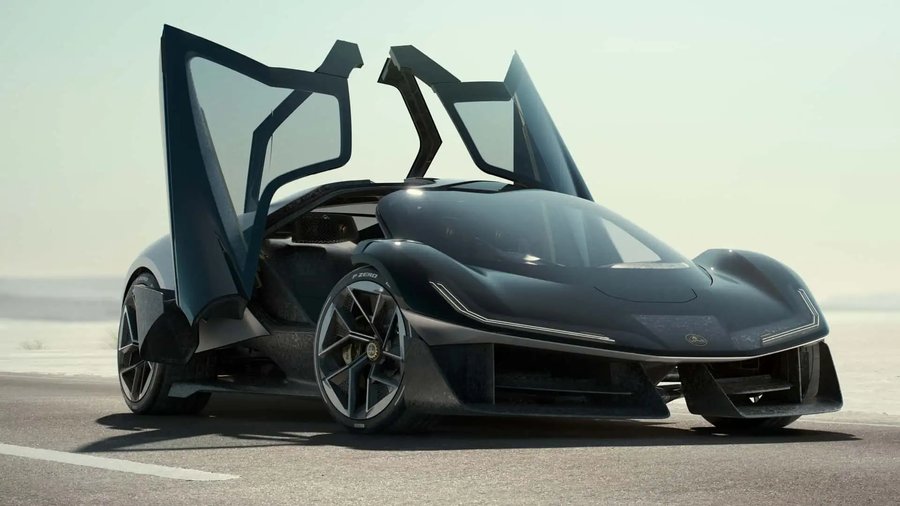The Lotus Theory 1 Concept Has Wild Doors and a Center Seating Position

Meet the Theory 1, the latest concept from Lotus. Like all of its new cars, the Theory 1 is all-electric, with a 70-kWh battery pack and all-wheel drive. Lotus says the Theory 1 makes 987 horsepower, with the ability to sprint to 62 mph in just 2.5 seconds, onto a top speed of 200 mph.
Lotus has big plans for its all-electric future. To show off those plans, the company just introduced a new concept called the Theory 1. It's a two-door sports car with 987 horsepower, all-wheel drive, and a target weight of under 3,500 pounds.
Wired got an exclusive look at the Theory 1 before its full debut on Tuesday, revealing all of the details on the new electric supercar.
The Theory 1 is meant to represent Lotus's future design scheme. Said to be inspired by the Esprit, the sharp wedge profile leads to a defined nose blade with thin boomerang-shaped headlights. There's a cab-forward shape that calls back to the Esprit's mid-engine design, but the rear end is totally alien, with ultra-thin taillights, a tall deployable spoiler, and a huge diffuser. The coolest bit are the doors, which open by swinging backward and up, sort of like the reverse of Koenigsegg's dihedral synchro-helix doors.
At the base of the Theory 1 is a carbon tub with three seats: A centrally located seat for the driver, and a seat on either side for passengers, not unlike the seating configuration in the McLaren F1. The similarities end there, though. The interior comes equipped with a head-up display and screens next to each A pillar in place of side mirrors. Weirdly, there are inflatable pods embedded into the fabric of the seats, doors, and steering wheel used to massage occupants and deliver haptic feedback to the driver. There are even speakers embedded into the headrests of each seat using a 3D-printed lattice structure.
The most interesting part of the Theory 1's interior is its "on-demand" buttons. Formed via what's described as a "reactive textile" that occupies surfaces along the cabin, it can present buttons when needed, and have them disappear when not.
"[T]he technology is only there when you need it, and then it disappears, like buttons on demand," Facundo Gutierrez, managing director of MotorSkins, the company behind the tech, told Wired. "For example, you are driving and there is a car coming up behind you. [The seat fabric] can give you a gentle tap on the shoulder. Or you get a phone call, and the button appears for you to take the call."
At the heart of the Theory 1 sits a 70.0-kilowatt-hour battery pack that Lotus hopes can deliver 250 miles of range. The company also predicts a 0-62 time of under 2.5 seconds and a top speed of 200 miles per hour. the 987-hp rating is notably far less than Lotus's other electric supercar, the 2,000-hp Evija. This car is also around 660 pounds lighter than the Evija—a ray of hope that the company is angling itself back to its core ethos of lightweight sports cars, at least relative to the era of overweight EVs.
“There’s been this period of maximalism, and people having to do one-upmanship and go above, above, above," design vice president Ben Payne told Wired. "And I think we’ve reached that point where it plateaus in stylistic terms, and also in the demonstration of tech. We’re not in a crazy numbers race with this car.”


Nouvelles connexes


